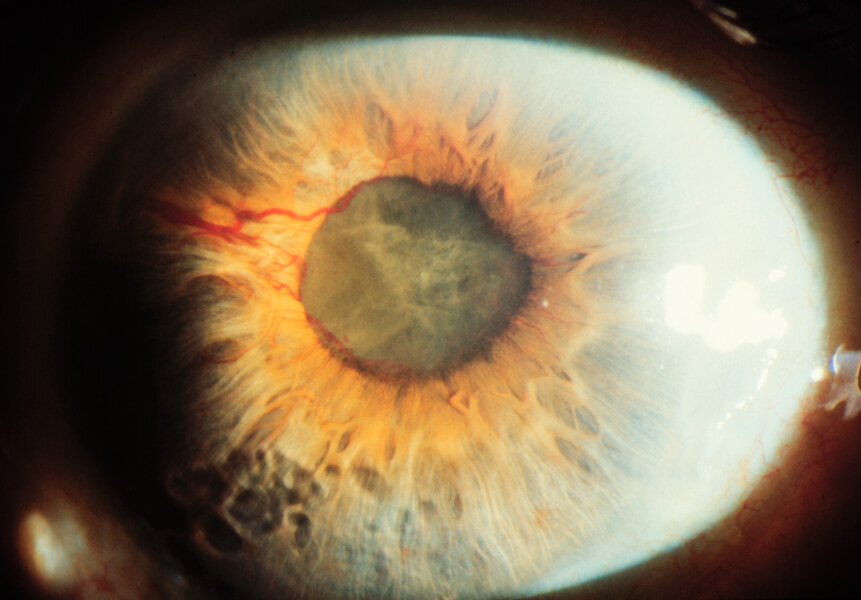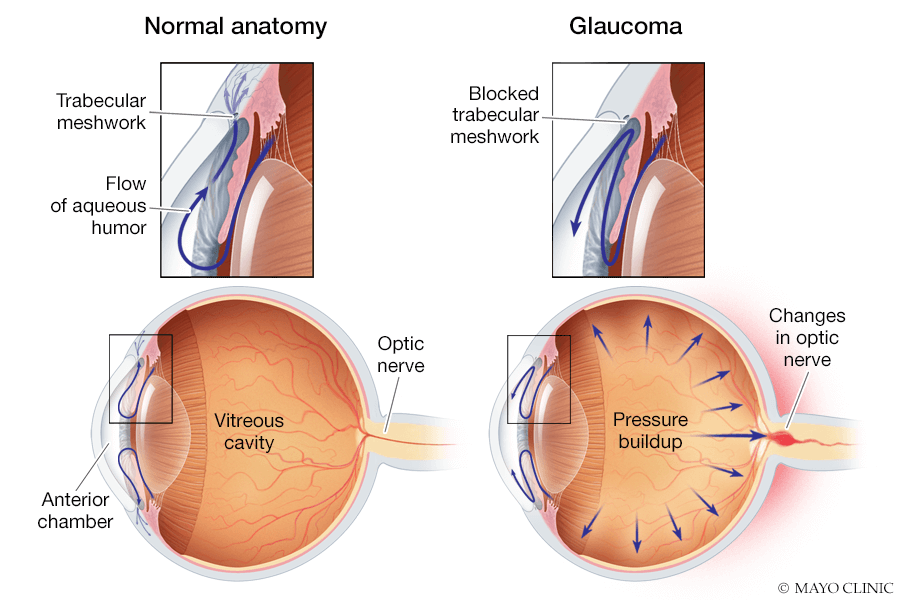When Sylvia Groth steps through the doors of the Vanderbilt Eye Institute in Nashville, Tennessee, she knows she has a tough day ahead. Before she goes home, she’ll very likely have at least one hard talk with a person whose sight has been ravaged by glaucoma. “When I make a diagnosis of advanced glaucoma, I do it with a heavy heart,” she says. “It’s such an empty feeling to not be able to do anything.”
An incurable eye disease that kills vital nerve cells at the back of the retina, glaucoma is a leading cause of irreversible blindness in the world. More than 70 million people have it, and 3 million of them already are blind. Nothing can be done to restore vision once it’s lost, and even the best treatments can’t always slow disease progression. But researchers foresee a time when they can offer therapies to protect nerve cells in the eye and perhaps even restore lost sight.
“We’re making advances with every different type of treatment,” says ophthalmologist Leonard Levin of McGill University in Montreal.
Researchers have long understood the basics of the most common form of glaucoma, called open-angle glaucoma. The eye is nourished by a clear fluid called the aqueous humor that keeps the eyeball inflated, plump and healthy. But just like a tire, the eye can become overinflated. If the aqueous humor can’t drain properly, pressure inside the eye grows too high and can crush cells within the optic nerve — the sensory cable that carries images from the retina to the optical centers of the brain.

Many people with glaucoma develop high pressure when fluid builds in the eye. This fluid can push the eye’s lens forward and may make the cornea waterlogged and cloudy.
CREDIT: CHRIS BARRY / VISUALS UNLIMITED, INC.
Pressure probably hurts nerve cells in other ways too, says ophthalmologist Harry Quigley of Johns Hopkins University. While glaucoma causes tell-tale damage to the optic nerve — including an indentation or “cupping” in the main optic nerve — other, less obvious types of damage likely vary from one patient to another.
People with open-angle glaucoma may have no symptoms early on, even as nerve cells die. Yet as it progresses, glaucoma slowly erodes peripheral vision, blurring the edges of any scene. Over time, people may develop “tunnel vision” as if they were looking through a thin tube or straw. If enough optic nerve cells die, sight is lost completely. (A less common form of glaucoma can have immediate, dramatic symptoms, including eye pain, blurriness, headaches and vomiting).
The oft-seen relationship between glaucoma and eye pressure has long set the basic approach to therapy. Eye drops and surgeries that lower pressure can slow or prevent damage. A handful of new drops have recently been approved by the US Food and Drug Administration, giving patients and clinicians their first new options for medication in 20 years. One of them, Rhopressa, improves outflow of aqueous humor from drainage tissue at the base of the cornea and is an especially important advance, Quigley says, because it needs to be used only once a day. “This is something that patients of mine are trying,” he says. “It’s for people who are losing their vision but don’t want to try surgery.”
But the drug also carries potentially strong side effects, including bloody eyes and blurred vision, making it a poor choice as a first treatment, adds Quigley, who reviewed the glaucoma treatment landscape in the 2016 Annual Review of Vision Science.

As glaucoma progresses, the edges of the visual field blur. Visual defects, represented as dark pixels (left) and in simulations of what a person sees (right), increase as the disease advances.
CREDIT: E. RULLI ET AL / SCIENTIFIC REPORTS 2018
And reducing pressure isn’t a cure-all. For reasons that aren’t completely clear, damage to the optic nerve can develop in people with normal or even low eye pressure. Studies have found that nearly 30 percent of patients who receive pressure-relieving treatment for glaucoma go blind in one eye and nearly 10 percent become legally blind.
“High pressure is the only modifiable risk factor for glaucoma that we’ve been able to identify,” Groth says. Pressure is “a good answer and it fits certain patients. But it is not really the whole answer.”
This growing recognition of glaucoma’s complexities has inspired researchers to rethink their approach. Instead of merely lowering pressure inside the eye, they’re looking to bolster and shield the nerve cells themselves — a tactic called neuroprotection. This could potentially prevent glaucoma and preserve sight no matter how much pressure builds in an eye.
“There has been a resurgence of interest in neuroprotection,” says Levin, coauthor of an overview of the state of research on this approach in the 2017 Annual Review of Vision Science.
To succeed, scientists will have to shift focus to the nerve cells involved with vision, he says. “In the old days, the goal was just to keep the cells alive.” Now, researchers recognize that cells must not only survive but function as well.
Among a number of candidate treatments are neurotrophic factors, small molecules the body uses to nurture growing nerve cells. Eye drops containing recombinant human nerve growth factor (or rhNGF) — a genetically altered version of a naturally occurring growth factor — already have been approved by the FDA for treatment of neurotrophic keratitis, a disease that affects the cornea of the eye. A small, ongoing, 60-patient randomized trial is now testing rhNGF in glaucoma patients. The results aren’t yet in, but in theory, rhNGF could help block a signal that tells an optic nerve cell it’s time to die, saving the cell and keeping it functioning.
While much work must be done before these molecules reach patients, Groth, who was involved in the trial, is excited by the approach. “We know that they have activating roles on certain cells,” she says.

The most common form of glaucoma, called open-angle glaucoma, can result when pressure inside the eye builds because of too much aqueous humor, a fluid that nourishes the eye. The eye may make too much aqueous humor or it may not drain properly via tissue called the trabecular meshwork.
CREDIT: IMAGE COURTESY OF MAYO CLINIC
Animal studies of other protective molecules have also shown promise. Quigley and colleagues found that injections of tozasertib — a compound that inhibits an enzyme involved in cell death — could protect the optic nerves of rats with glaucoma, research he reported in 2013 in the Proceedings of the National Academy of Sciences. Quigley’s trying to get pharmaceutical companies to start clinical trials of the drug but says the process so far has been slow and frustrating.
At this time, Levin says, there are no large-scale advanced clinical trials of any potential neuroprotective drugs for glaucoma, which means that therapies will be several years off. Still, with so many candidate compounds and so much at stake, he predicts that major clinical trials could begin within the next one to three years.
New vision
Protecting the optic nerve against damage would be a huge accomplishment. But finding a way to restore sight that has been lost would really change the game. Humans and most other animals don’t regrow optic nerve cells once they’re damaged, but the genes involved in building those cells remain. If those genes could somehow be switched back on — perhaps with a nudge from injected stem cells, one idea goes — new functioning cells might grow and sight could return.
So far, researchers have taken only the first steps toward that dream. It’s possible to grow human optic nerve cells in the labusing genetically engineered stem cells, a team at Johns Hopkins recently reported in the journal Stem Cells Translational Medicine. But, Quigley says, that’s a long way from actually getting those cells to transfer visual signals to a human brain.
For the foreseeable future, that means surgeries and eye drops will likely remain the standards for treatment. Those drops can make a huge difference for people with early-stage glaucoma, but they need to use them properly and many don’t. In fact, patient non-compliance is thought to be the main reason eye-drop treatments fail to slow glaucoma, a team reported in Pharmaceutical Research in 2019. A separate study involving nearly 14,000 patients prescribed eye drops for glaucoma found that over the course of a year, only about 10 percent used the drops without significant lapses.
The optic nerve carries information from the eye’s retina to the brain via nerve fibers that exit the back of the eye through the optic disc. Normally, the center of this optic disc is relatively small (left), but in an eye with glaucoma, damage to the optic nerve head manifests as tell-tale “cupping” of the disc (right).
Because early-stage glaucoma often doesn’t cause symptoms that interfere with day-to-day life, Quigley says he has a hard time persuading patients that they should put up with the redness, irritation and cost that can come with eye drops. “If you give them a treatment that has any side effects at all, they aren’t going to abide by that,” he says.
Driving home the importance of early detection and treatment is a big part of Groth’s job. “There has to be a lot of education to let patients know what the stakes are,” she says. “I tell my patients that drops are incredibly important.”
And yet all too often, that goal isn’t met, and some patients lose sight that might have been saved. Despite these disappointments, Groth looks to a future that is clearer and brighter for everyone. “The adage has been that glaucoma is an irreversible, blinding condition,” she says. “I’d like to hope that, within my career, I might be privileged to give a different story to my patients.”




